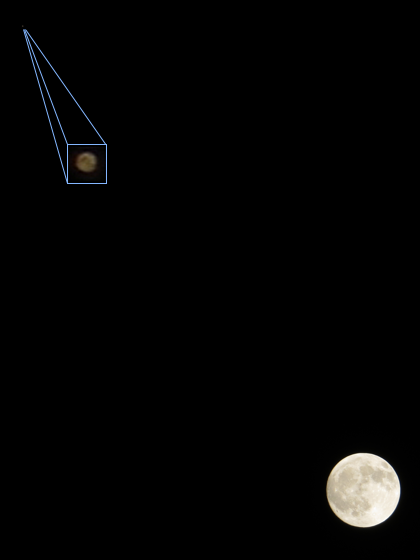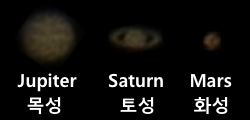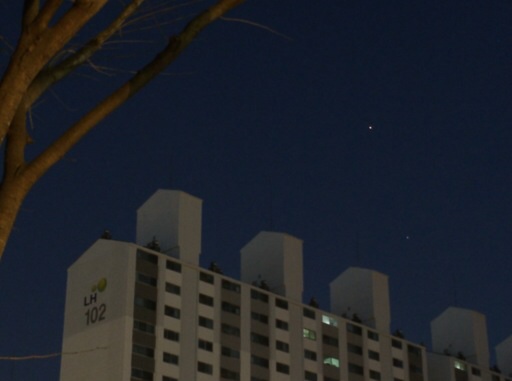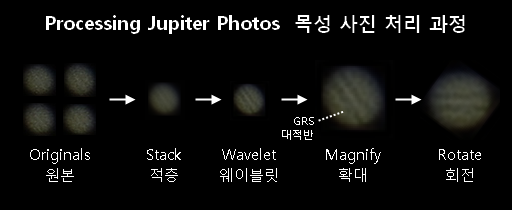Mars closest approach of 2014
Posted by Wesley on
Mars and the Moon
Mars comes very close to Earth every 780 days or so. This happened again last night - distance between Mars and Earth was 0.618 AU. The last time Mars made an approach closer than this was back in December 19, 2007, when it was 0.589 AU. At these distances, Mars is 15 arc seconds big, which registers as 10 pixels wide on my SX50 HS at maximum optical zoom. Until the next approaches on May 31, 2016, or July 31, 2018, this is about as big as it gets for the camera. Still, using both the 2x digital teleconverter and RegiStax stacking, I was able to get a clearer image of the planet from the multiple photos.
Meanwhile, a full moon was right next to Mars yesterday. This created a good opportunity to take both the Moon and Mars in the same photo. Full moon is quite bright, but Mars was also shining at its peak (-1.4 magnitude), so it was holding on its own. Interestingly, a lunar eclipse is also supposed to happen today, dimming the Moon so that Mars would be easier to see. But it happens during the day here, while both the Moon and Mars are below the horizon. So that's no go for me.
The lunar eclipse that is visible in my country would happen on the early evening of October 8, 2014, starting as the Moon rises from the horizon. At that time, the faint Uranus (5.7 magnitude) would be next to the Moon. I wonder if the eclipsed Moon would be dim enough for me to see the planet, weather and location permitting.
Device: Canon SX50 HS
Filters: None
Location: Suwon, Korea
Main Image
Settings: 351mm (reduced to 20%) - ISO 80 - 1/80s - f/5.6
Time: 2014-04-14 23:34 KST
Inset
Settings: 1200mm (w/ 2x Digital TC) - ISO 80 - 1/200s - f/6.5
Time: 2014-04-14 23:23 KST
41 photos stacked with RegiStax 6.1.0.8



